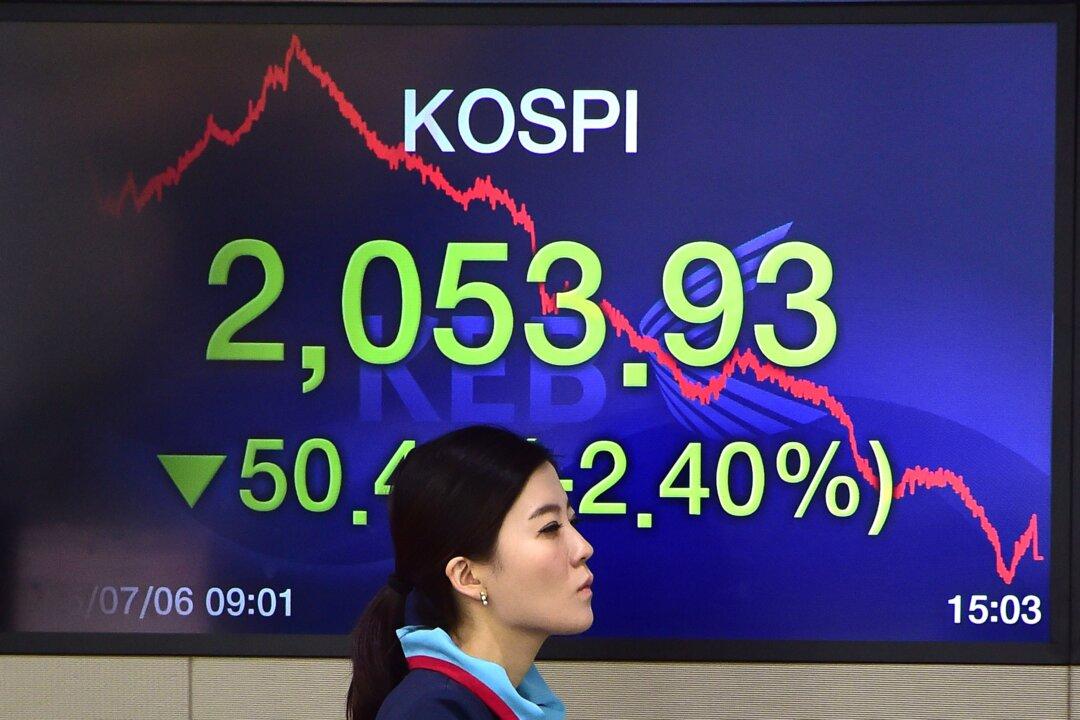Forget about the purchasing managers surveys, which tell you industrial activity in China is grinding to a complete halt. Not 7 percent growth, not 6 percent growth—zero growth.
This Indirect Indicator Tells You How Dire China’s Economic Situation Really Is
This small country in South East Asia tell you more about China than domestic economic indicators

A currency dealer walks past a screen showing South Korea's benchmark stock index in a trading room at the Korea Exchange Bank in Seoul on July 6, 2015.Jung Yeon-Je/AFP/Getty Images
|Updated:
Valentin Schmid is a former business editor for the Epoch Times. His areas of expertise include global macroeconomic trends and financial markets, China, and Bitcoin. Before joining the paper in 2012, he worked as a portfolio manager for BNP Paribas in Amsterdam, London, Paris, and Hong Kong.
Author’s Selected Articles




